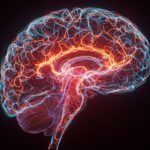A recent study published in Political Psychology challenges a popular theory: that heightened sensitivity to negative stimuli, known as negativity bias, drives people toward socially conservative political ideologies. While prior research suggested a strong link between physiological responses to threats and conservative attitudes, the new study presents limited evidence to support that claim.
The study was motivated by influential research proposing that psychological traits, such as heightened negativity bias, shape political ideology. Conservatives, it was argued, are more sensitive to negative stimuli, which predisposes them to favor policies emphasizing stability and protection. These claims were supported by correlations between self-reported negativity bias and social conservatism, as well as physiological responses to threatening or disgusting stimuli.
However, several replication studies failed to reproduce these findings, prompting the researchers to reconsider the relationship between negativity bias and ideology. This study aimed to explore whether conscious (self-reported) and unconscious (physiological) measures of negativity bias are truly aligned, and if they collectively or independently predict social conservatism.
“In 2020, we published a study in Nature Human Behaviour showing there is no direct link between right-wing ideology and threat sensitivity measured with physiological responses to threatening (negative) images. In the new study, we explored possible links between right-wing ideology and sensitivity to threats. These followed from the failed replication and were our ‘best ideas’ at the time and we preregistered them as such,” explained study author Bert N. Bakker, an associate professor for good research practices at the University of Amsterdam and co-director of The Hot Politics Lab.
To test these hypotheses, the researchers conducted two preregistered laboratory studies—one in the United States and one in the Netherlands—and followed them with a larger, registered report-style replication study.
For the laboratory studies, researchers recruited participants from local communities near universities, resulting in samples of 71 participants in the United States and 172 in the Netherlands. Participants first completed surveys measuring demographic variables, political attitudes, and personality traits. Social conservatism was assessed using 15 policy-related items designed to capture a spectrum of socially conservative to liberal viewpoints.
To measure implicit social conservatism, Bakker and his colleagues used the Implicit Association Test (IAT). This task required participants to categorize words related to liberal or conservative ideologies alongside positive or negative valences. For instance, participants matched words like “open borders” or “traditional” with either positive or negative descriptors. Faster reaction times in associating conservative words with positive descriptors, or liberal words with negative ones, indicated an implicit preference for conservatism.
Negativity bias was assessed using an image-viewing task. Participants were shown a series of images categorized as negative (e.g., threatening or disgusting), neutral, or positive. After viewing each image, they rated their emotional arousal using a standardized scale. Simultaneously, their physiological responses were measured through electrodermal activity, which records changes in skin conductance as an indicator of arousal. This dual approach captured both conscious (self-reported) and unconscious (physiological) reactions to emotionally charged stimuli.
As expected, researchers found a positive correlation between self-reported (explicit) social conservatism and implicit conservatism. This alignment suggests that participants’ conscious political attitudes often corresponded with their unconscious biases.
However, the hypothesized relationship between negativity bias and social conservatism was not strongly supported. Physiological measures of negativity bias showed no significant correlation with either explicit or implicit social conservatism, challenging the idea that unconscious sensitivity to negative stimuli directly predicts conservative political attitudes.
Self-reported measures of negativity bias yielded slightly different results. Participants who reported higher levels of arousal in response to negative images showed a weak positive association with self-reported social conservatism. However, this relationship was inconsistent, reaching statistical significance in the United States sample but not in the Netherlands sample during the laboratory studies.
This variability suggests that the relationship may depend on contextual factors such as cultural or societal influences, or it may reflect sample-specific differences rather than a robust, generalizable pattern. The effect sizes were small, further suggesting that even if self-reported negativity bias is related to conservatism, its influence is limited.
To confirm these findings, Bakker and his colleagues conducted a larger-scale replication study with over 1,000 participants each from the United States and the Netherlands. Participants completed similar tasks online, including surveys, an IAT, and an image-viewing task. The online format increased the diversity of the sample, allowing for a more robust test of the hypotheses. The larger sample sizes also improved the statistical power to detect subtle relationships between variables.
Despite the expanded scope, the replication study provided no clear evidence that sensitivity to negative stimuli plays a role in shaping ideological differences. “These findings suggest that negativity bias likely isn’t the key to understanding why conservatives and liberals differ,” Bakker told PsyPost. “This calls for a reevaluation of the relationship between emotion, psychology, and ideology in political psychology.”
The researchers followed a practice known as preregistration, where they publicly documented their study design, hypotheses, and analysis plan before collecting data. This approach, often carried out on platforms like the Open Science Framework, promotes transparency and helps prevent selective reporting or “cherry-picking” results.
“I think the study shows that preregistration is useful: we preregistered our ideas, and most were not confirmed,” Bakker explained.
The theory that conservatives are universally more sensitive to negative information than liberals has faced increasing scrutiny as new research reveals a more nuanced picture. In a study using two laboratory games, conservatives displayed greater caution and negativity bias in a survival-themed task, while liberals exhibited these traits in a financially threatening scenario, suggesting that both groups are sensitive to negative stimuli but in different domains.
Similarly, another study found that while conservatives were more concerned about violent conflict in general, liberals expressed greater concern about economic threats, challenging the notion of a universal link between threat and ideology.
“Political Psychology research by my team and others has now shown that there is not much reason to think that there is a systematic link between ideology and threat sensitivity,” Bakker said. “I think that is important to know. Yet, I also think that political psychology might need to turn to other explanations for understanding ideological differences.”
The study, “Being of one mind: Does alignment in physiological responses and subjective experiences shape political ideology?“, was authored by Kevin Arceneaux, Bert N. Bakker, and Gijs Schumacher.




